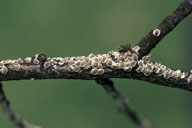European elm scale control
European Elm Scale
Dutch elm disease or European elm scale infestation? It is common to diagnose Dutch elm disease when it could be European elm scale infestation. In both, the elm tree will display wilting and yellowing of leaves. A sick tree is a sick tree, right? Not exactly. Because treatment is different for each ailment, it is important to identify the guilty party (a virus or a pest).
With even a minimal examination, scale is usually visible to the naked eye. Even though the pests are tiny, they are somewhat brightly colored and adult females sport white eyelash-like fringe on their body.
European Elm Scale Control Methods
 Robust, healthy elms can typically tolerate European elm scale feedings. Proper irrigation and fertilization doesn’t just create an attractive tree. It creates a strong tree. Weak trees are more susceptible branch loss, which can lead to further weakness.
Robust, healthy elms can typically tolerate European elm scale feedings. Proper irrigation and fertilization doesn’t just create an attractive tree. It creates a strong tree. Weak trees are more susceptible branch loss, which can lead to further weakness.
Parasitic wasps, mites and spiders are natural predators of European elm scale. To ensure that natural insect balance is maintained in a geographic area, it’s important to work with appropriate county or state departments when introducing one insect to eliminate another.
The Colorado University Cooperative Extension considers horticultural oils “one of the best ways to control a wide variety of plant pests during the growing season.” Oils literally lay it on thick and smother pests. They can also penetrate eggs. Oils are best applied by professionals or very experienced gardeners to ensure that beneficial insects aren’t killed during application.
Chemical European elm scale control of both the soil around an elm or infested areas of the tree is a focused way to eliminate scale. Precise timing of the appropriate chemical is important in order to maximize the potential for scale eradication.
Is your elm tree infected by European elm scale? Contact SprayTech, Colorado tree health experts, at 720-248-0000 to discuss identification and European elm scale control options.


Comments are closed.